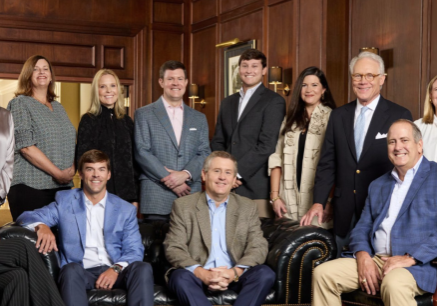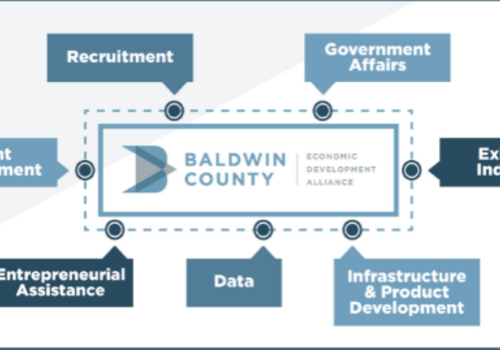Boosting Employee CARE Can Help Small Businesses Build Community

By Megan Bowers, Columbia Southern University
Community creates employees who care. Employees who belong to a community feel a sense of belonging, unity and security… human traits that allow them to feel empowered and safe.
Whether it’s the neighborhood market or retail store, small businesses thrive when employees are personable and focused on customer needs. Customer service is also about fostering community and leadership within the business. If employees do not feel supported or a sense of commitment toward the company, business could suffer.
Data reported by “Business 2 Community” revealed that “Organizations with engaged employees outperform those with low employee engagement by 202%” (Brooke, 2022). Therefore, increasing morale and employee engagement is of the utmost importance.
Morale isn’t just about being happy; it is about having a purpose and the willingness to work. Low morale can cause employees to become demotivated, resulting in low work performance. A survey administered by Gallup indicated that just 32% of U.S. employees felt engaged at work, while only 30% of workers “received recognition or praise for doing good work” (Harter, 2023).
The CARE Model
In short, employees want to feel valued. Barbara Glanz, author of “Handle With CARE: Motivating and Retaining Employees,” indicated that the most important factors for increasing a sense of value and morale in employees is through the CARE model: Creative communication; atmosphere and appreciation for all; respect and reason for being; and empathy and enthusiasm (Glanz, 2002).
Communication is the exchange of information between individuals. Sending text messages, waving hello to your neighbor, or ordering a piece of furniture from a boutique on Main Street are all forms of communication. When noise is present—literal or figurative noise—communication can become muddled and sometimes an individual’s perception of the information is inaccurate.
To avoid undo stress on employees, leaders should communicate clearly and consider their choice of words and tone in which they are speaking. Additionally, non-verbal communication is just as important as verbal communication. It is also important to interact with all employees and listen to their opinions. According to Forbes.com, 74% of employees report they are more effective at their job when they feel heard (Ceniza-Levine, 2021). Managers may not be able to implement every suggestion received but knowing that that they listened and value employees’ suggestions, can make all the difference.
As a leader of a business or organization, you must cultivate an atmosphere of appreciation within the workplace to help boost morale. A simple “great job” or “thank you” can show workers that their work has not gone unnoticed. Recognition of efforts, even if a goal is not achieved, helps motivate employees to work harder for the betterment of the company (Eleza, n.d.). Additionally, Glanz recommends encouraging “fun” in the workplace, supplying all resources needed for the employee to get their work done, and promoting positive relations among coworkers (Glanz, 2002). After all, the culture of “me” has been retired and we are now living in a culture of “we.”
Small businesses often face challenges such as juggling finances, marketing, and managing operations. Therefore, owners and leaders can sometimes forget that their employees are people and have lives outside of their job. Instilling a culture of respect can foster purpose among coworkers and help boost positivity and productivity in the workplace. One way to show respect is to learn about each employee and encourage them in their tasks. It can also be helpful to give them ownership over certain processes within the business to create a sense of belonging. For example, providing employees freedom to design marketing materials or help with the decision on which products to order for resale, could help the employee feel a deeper sense of ownership and in turn, could boost morale and result in job longevity.
The final characteristics of Barbara Glanz’s CARE model are empathy and enthusiasm (Glanz, 2002). Empathy is the act of recognizing that we are all human beings who come from different walks of life and need help from time to time. According to data reported by Gartner, 82% of employees say it’s “important for their organization to see them as a person, not just an employee. (Turner, 2023). We can all relate to leaving work early, calling in sick, or perhaps bringing their child to work. It is important to be empathetic and work with individuals to create a work-life balance and provide employees with resources or assistance when needed. As stated by Eleza (n.d.), “Employers who encourage their workers to strike a balance between work and life usually retain great talents and build a healthier and more productive workplace.”
Enthusiasm is the act of being overjoyed or showing interest in something. Attitudes can be contagious and often spread like wildfire. If one individual complains, soon the entire staff may acquire some negative attitudes. Leaders should spread enthusiasm and positivity throughout the workplace by celebrating the strengths of the business and the strengths of their employees. For example, asking employees to identify short-term goals for the business and then celebrating those goals as a team may instill enthusiasm and motivation. Enthusiasm can help individuals prioritize tasks, stay focused, promote a positive attitude, inspire others and just make the day more enjoyable (Glanz, 2002).
All of these characteristics can foster a community within your business and among your employees. Implementing these strategies may just land your coastal Alabama business glowing reviews about personable employees who communicate effectively in a caring and respectful atmosphere…a business where the community meets community.
References
Brooke, C. (2022, July 21). The ROI of Employee Engagement: 7 Stats You Need to Know (pp. 30 – 46). Business 2 Community. Retrieved August 17, 2023, from https://www.business2community.com/strategy/roi-employee-engagement-7-stats-need-know-01573138#zYmqvmb8Hu5gSbRU.99
Ceniza-Levine, C. (2021, June 23). New Survey Shows The Business Benefit of Feeling Heard – 5 Ways To Build Inclusive Teams. Forbes. Retrieved August 17, 2023, from https://www.forbes.com/sites/carolinecenizalevine/2021/06/23/new-survey-shows-the-business-benefit-of-feeling-heard–5-ways-to-build-inclusive-teams/?sh=1c8cc5275f0c
Eleza, R. (n.d.). 5 Ways Small Businesses Can Boost Employee Morale. Engage For Success. Retrieved August 17, 2023, from https://engageforsuccess.org/culture-and-working-environment/5-ways-small-businesses-can-boost-employee-morale
Glanz, B. (2002). Handle With CARE: Motivating and Retaining Employees. McGraw-Hill Professional. https://bookshelf.vitalsource.com/books/9780071788151
Harter, J. (2023, January 25). U.S. Employee Engagement Needs a Rebound in 2023. Gallup. Retrieved August 17, 2023, from https://www.gallup.com/workplace/468233/employee-engagement-needs-rebound-2023.aspx
Turner, J. (2023, March 29). Employees Seek Personal Value and Purpose at Work. Be Prepared to Deliver. Gartner. Retrieved August 17, 2023, from https://www.gartner.com/en/articles/employees-seek-personal-value-and-purpose-at-work-be-prepared-to-deliver
Read More
Subscribe to our weekly newsletter
Sign up here for free to get Bay Business News email newsletter every Friday.
By subscribing, you agree to our User Agreement and Privacy Policy & Cookie Statement.











